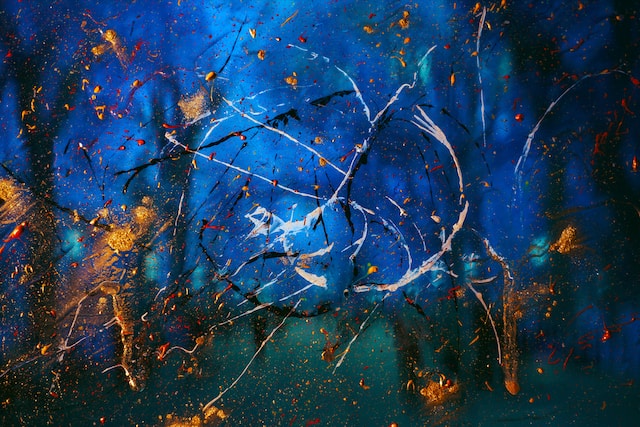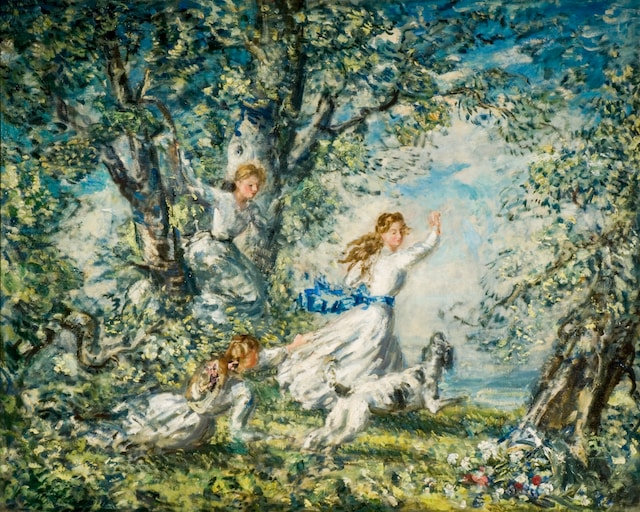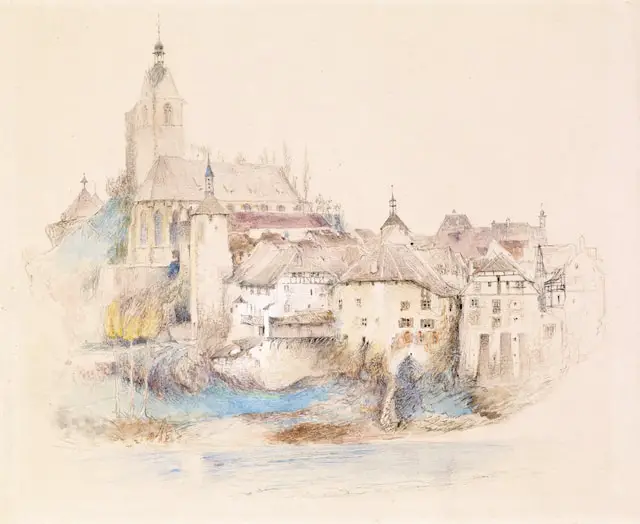Expressionism and Impressionism are two different art movements that have made lasting impacts on modern art. Expressionism is characterized by bold colors and abstract shapes to evoke emotion while Impressionism focuses on capturing fleeting impressions of light and color. Both styles continue to inspire modern painters today, as well as those seeking to express themselves through the visual arts.
Expressionism
(Photo by Jr Korpa on Unsplash )

Expressionism is a form of art in which the artist attempts to express their inner emotions or feelings. This can be done through the use of colors, brushstrokes, and/or the overall composition of the piece. Expressionism began in the early 20th century as a reaction to Impressionism. While Impressionists sought to depict reality as accurately as possible, Expressionists believed that art should be more about the expression of emotion than realism.
Impressionism
(Photo by Birmingham Museums Trust on Unsplash )

Impressionism was a painting movement that emerged in the late 19th century. The style is characterized by short brushstrokes and light colors. Impressionist paintings often depict scenes from everyday life, such as landscapes, seascapes, and cityscapes.
Expressionism Vs. Impressionism – Key differences
Expressionism and Impressionism are two important movements in the history of art. Here are the key differences between them:
Time period: Impressionism emerged in the late 19th century in France, while Expressionism emerged in the early 20th century in Germany.
Subject matter: Impressionist art typically depicts everyday life and landscapes, with a focus on light and color. Expressionist art, on the other hand, often features distorted, emotional depictions of reality that reflect the inner turmoil of the artist.
Technique: Impressionist artists use loose brushstrokes and a bright, colorful palette to capture the fleeting momentary impressions of their subjects. Expressionist artists often use bold, exaggerated brushstrokes and colors to create a distorted, emotional interpretation of reality.
Perspective: Impressionist art often features a detached, observational perspective, while Expressionist art tends to be more subjective and personal.
Mood: Impressionist art tends to be light, airy, and cheerful, while Expressionist art often has a darker, more intense mood.
While both Impressionism and Expressionism sought to capture the essence of reality, they did so in very different ways, reflecting the unique social, cultural, and artistic contexts in which they emerged.
How to tell if a painting is expressionist or impressionist
For starters, expressionist paintings tend to be more emotionally charged than impressionist ones. They often feature bolder colors and brushstrokes, and the overall effect is often more intense. Impressionist paintings, on the other hand, are typically more subdued and gentle. They often feature softer colors and lighter brushstrokes, and the overall effect is usually more calming.
Another way to tell the difference between these two styles is to look at the subject matter. Expressionist paintings often deal with heavier topics like death or suffering, while impressionist paintings tend to be more lighthearted and focused on things like nature or everyday life.
Finally, expressionist paintings typically have a rougher, more chaotic feel to them while impressionist paintings are usually more polished and refined. This is due in part to the different painting techniques that these two styles utilize. Expressionists often use thick layers of paint applied quickly and forcefully, while impressionists use thinner layers of paint applied in a more controlled manner.
What are the main differences between impressionism and Expressionism styles in music?
The main differences between impressionism and expressionism styles in music are the ways in which they are composed and the techniques used to create them. Impressionism is a more traditional style of composition, while expressionism is more experimental.
Impressionism in music focuses on creating a mood or atmosphere through the use of sound. It often uses shorter, simpler phrases and melodies to create a sense of intimacy and immediacy. Expressionism, on the other hand, is more concerned with conveying emotion and feelings through music. It often uses atonal harmony and extended techniques to create a feeling of tension or release.
What are the similarities between impressionism and Expressionism?
Impressionism and Expressionism are two distinct art movements with different styles and approaches. However, there are a few similarities between them:
Both movements sought to challenge traditional art styles: Impressionism challenged the strict rules of academic art by focusing on capturing the changing effects of light and color, while Expressionism rejected the traditional depiction of reality in favor of emotional and subjective expression.
Both movements focused on individual experience: Impressionists focused on capturing the momentary impressions of the world around them, while Expressionists focused on the emotional experience of the artist.
Both movements were influenced by new technologies and social changes: Impressionism was influenced by the new technologies of photography and the rise of leisure culture, while Expressionism was influenced by the rapid social and cultural changes of the early 20th century.
Both movements had a significant impact on the development of modern art: Impressionism paved the way for new art forms such as Fauvism and Cubism, while Expressionism paved the way for the development of Abstract Expressionism and other modern art movements.
While there are some similarities between Impressionism and Expressionism, they remain distinct art movements with different styles and approaches to creating art.
Was Van Gogh an Impressionist?
Van Gogh is often associated with the Impressionist movement because of his use of bold colors and light. However, Van Gogh was not an official member of the Impressionist group. He did exhibit his work with them on occasion, but he considered himself to be a Post-Impressionist.
What are the types of impressionism?
There are two main types of impressionism: French Impressionism and American Impressionism.
French Impressionism began in the 1850s and was led by Claude Monet. This type of impressionism is characterized by light brushstrokes, open compositions, and an emphasis on the natural world.
American Impressionism began in the 1870s and was led by Mary Cassatt. This type of impressionism is characterized by bolder brushstrokes, darker colors, and an emphasis on human emotions.
What are the types of Expressionism ?
There are four main types of Expressionism: Abstract Expressionism, Action painting, Neo-Expressionism, and Tachisme.
Abstract Expressionism is the first and most well-known type of Expressionism. It is characterized by large, abstract canvases with intense colors and brushstrokes.
Action painting is similar to Abstract Expressionism, but with a more spontaneous feel. The paint is applied quickly and with force onto the canvas.
Neo-Expressionism is a return to figural subjects and bright colors, while still maintaining an expressive style.
Tachisme is another term for abstract expressionist painting, characterized by uncontrolled dripping and splattering of paint on the canvas.
Featured Image By – Photo by Birmingham Museums Trust on Unsplash








